Guiding Principles
The Blooming Learning Programme follows scientifically researched and developed principles that form the basis of joyful learning. It pursues a multifarious approach to selecting the best and most relevant methodologies, educational practices and principles from other schools of thought. In order to make learning an enduring and meaningful experience, the following principles and theories support the Blooming Learning System:
Six Domains of Early Childhood Development: The domains of early childhood development aim to ensure the holistic development of a child. In Toddler’s Bloomingdale, it is achieved through multi-sensory age-appropriate activities children do every day and it also addresses the preschool readiness assessment.
These domains are crucial to be assessed in order to prepare the child for primary education later. As per NEP 2020, the learning in the formative years should cover the following facets:

Personal, Socio and Emotional Development
Children are taught emotional and social skills that build values of friendship, sharing, caring and compassion through classroom conversations, discussions, role-plays and stage exposure. Children are also taught new social rules while cooperating and responding to the feelings of others. Personal awareness focuses on making the child aware of himself/herself and their immediate environment. Our curriculum is designed to help children develop independence, safety, hygiene and self-help skills.
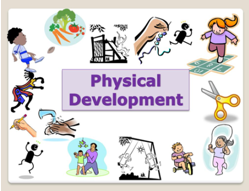
Physical and Motor Development
Our teaching aids like stencils, clay moulding, lacing boards, colouring and writing activities are used to enhance fine motor skills. Gross Motor Development focuses on the use of large muscle groups and whole-body movement to perform tasks like walking, balancing, crawling, running, jumping, and throwing. Our curriculum focuses on developing a love for sports and physical activities at an early age.
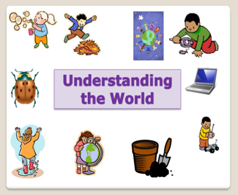
Cognitive Development
It focuses on a child’s development in terms of information processing, conceptual resources, perceptual skill, language learning, and other aspects of brain development. Our activities focus on developing thinking skills that include learning, counting, understanding, problem-solving, logical reasoning, remembering and drawing conclusions. The popular concepts of STEM and EVS are introduced at early age in order to help the learners grow in resonance with nature and immediate surroundings.
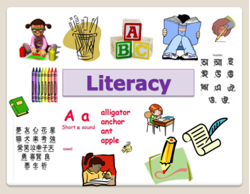
Language and Literacy Development
We use a language-rich environment to encourage children’s development of early literacy skills through storytelling, picture reading, identifying letters and words using Phonics to expand their vocabulary and create unique ambience to develop their abilities to communicate.
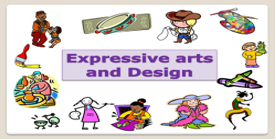
Arts and Creative Development
To enhance art and creative development, the students are exposed to self-expression and art based activities like role play, dramas, storytelling, and origami accepting and appreciating individual differences in children.
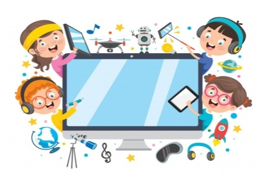
Technology Development
The children born in the era of information, media and technology are trained at an early age to use computer as a support to different developmental domain and to demonstrate the basic computer skills.

Developmental Milestones
Skills such as taking a first step, smiling for the first time, and waving “bye bye” are all called developmental milestones. Children reach milestones in how they play, learn, speak, behave, and move (crawling, walking, etc.). How your child plays, learns, speaks, and acts offer important clues about your child’s development. We have developed the activities and curriculum keeping in mind the developmental milestones of the students in order to respect the uniqueness of child and draw the best out of students. The following is a general list of developmental milestones of different age groups.
Two Years:
The child of this age copies others, especially adults and older children, shows concern for crying friend, gets excited when with other children, shows more and more independence and defiant behaviour (doing what he has been told not to), knows names of familiar people and body parts and says sentences with 2 to 4 words, begins to sort shapes and colours, plays simple make-believe games, stands on tiptoe, kicks a ball, climbs onto and down from furniture without help, throws ball overhand, makes or copies straight lines and circles.
Three Years:
The child of this age copies adults and friends, shows affection for friends without prompting, takes turns in games, understands words like “in,” “on,” and “under”, says first name, age, and sex, names a friend, says words like “I,” “me,” “we,” and “you” and some plurals (cars, dogs, cats), carries on a conversation using 2 to 3 sentences, can work with buttons, levers, and moving parts, plays make-believe with dolls, animals, and people, climbs and runs well, pedals a tricycle (3-wheel bike)
Four Years:
The child of this age enjoys doing new things, is more and more creative with make-believe play, would rather play with other children than by himself, talks about what she likes and what she is interested in, knows some basic rules of grammar, such as correctly using “he” and “she”, sings a song or says a poem from memory, tells stories, understands the idea of counting, remembers parts of a story, understands the idea of “same” and “different”, starts to copy some capital letters, tells you what he thinks is going to happen next in a book, hops and stands on one foot up to 2 seconds, catches a bounced ball most of the time, pours, cuts with supervision, and mashes
Five Years:
The child of this age wants to please friends, wants to be like friends, more likely to agree with rules, and likes to sing, dance, and act, is sometimes demanding and sometimes very cooperative, speaks very clearly, tells a simple story using full sentences, can print some letters or numbers, copies a triangle and other geometric shapes, knows about things used every day, like money and food, stands on one foot for 10 seconds or longer, can do a somersault, uses a fork and spoon and sometimes a table knife, can use the toilet on her own.